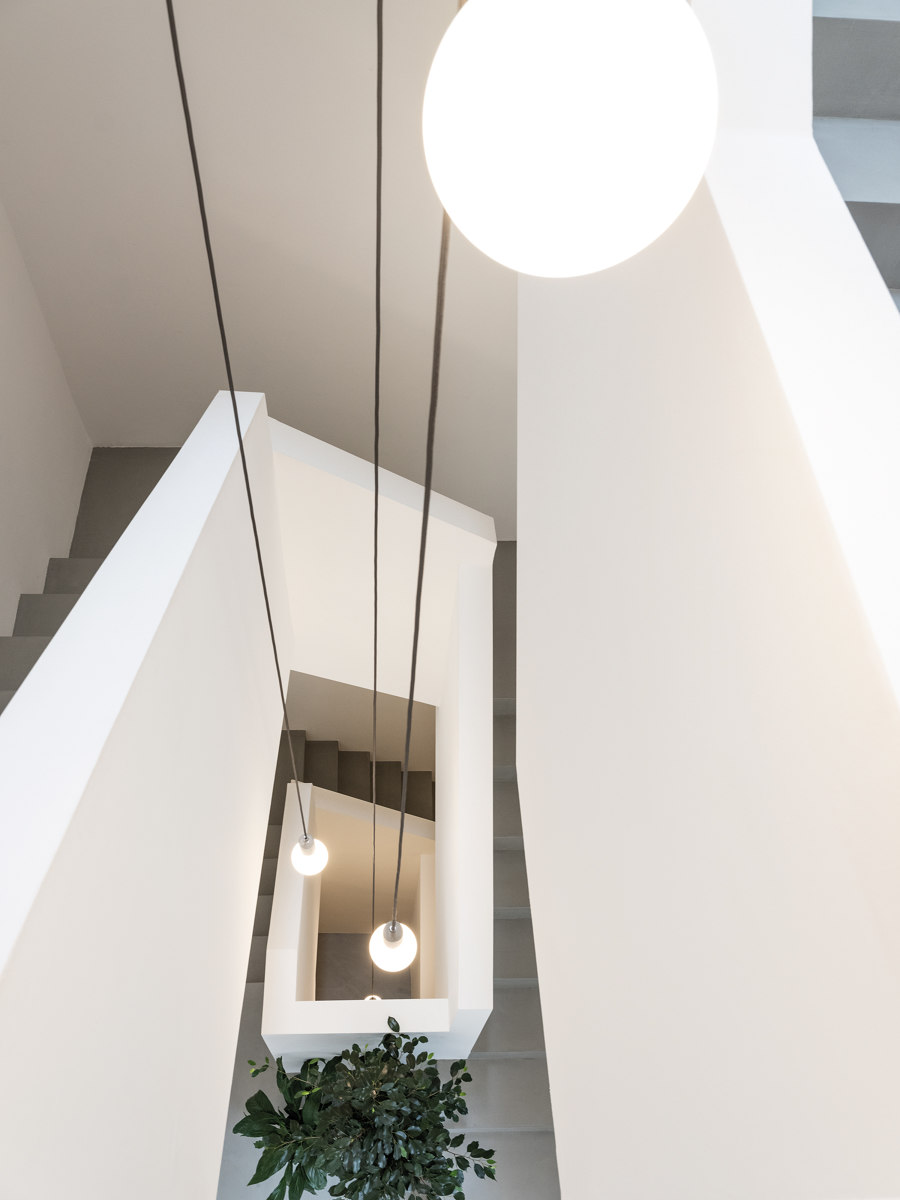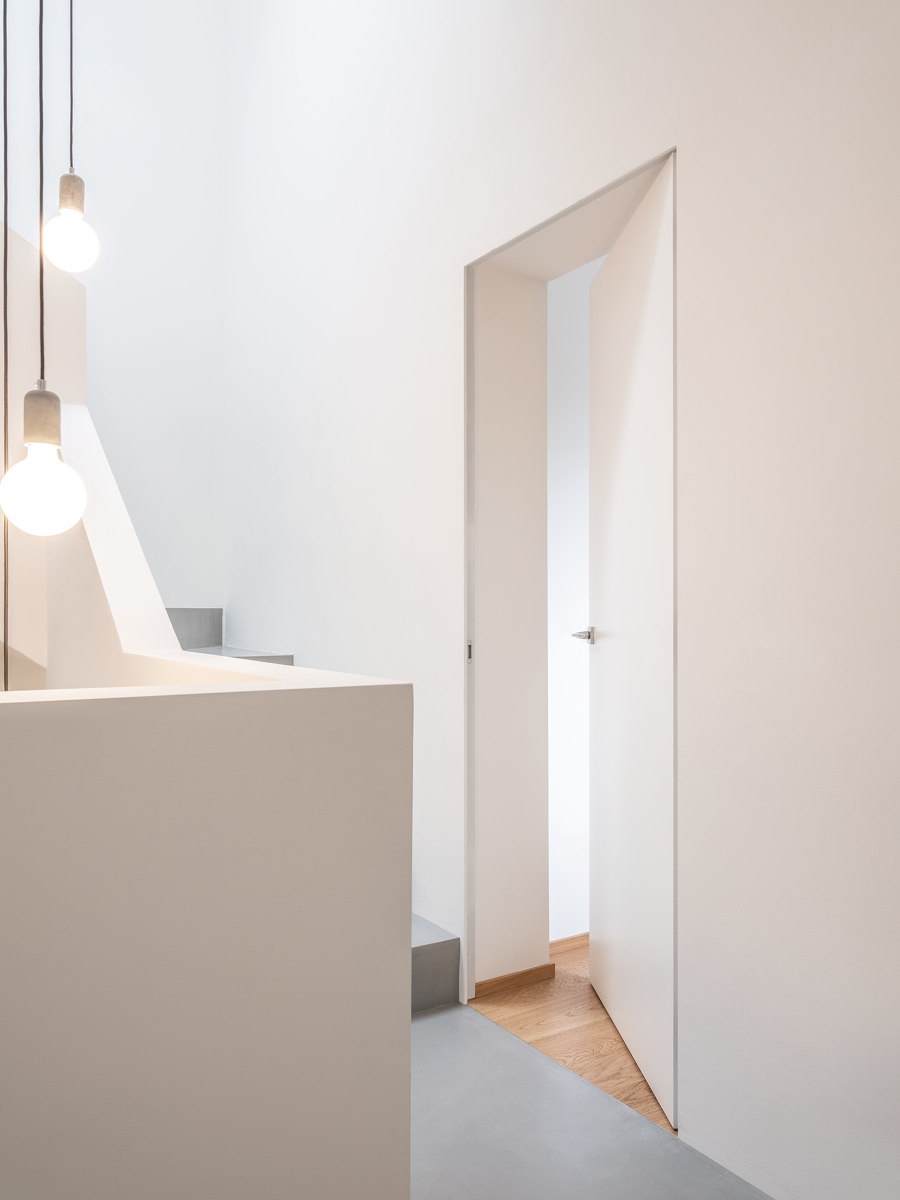
Photographer: Enrico Dal Zotto
Originating in France between the end of the 19th century and the first decades of the 20th century, Art Nouveau was characterised by its decorative harmony and elegance. The movement, which also spread to Italy under the name of Stile Liberty, played a key role in the history of 20th century architecture.
Casa Frida is a residential project that has given a second life to an Art Nouveau building dating back to 1920, which originally housed the town's old bocce club.
The building retained its sublime elegance with a richly decorated façade in a good state of preservation, but needed extensive redistribution of the rooms, considering its partial state of abandonment and its new residential use.
The lack of interior elements worth preserving facilitated the decision to create a clear stylistic contrast by preserving the exterior façade intact and creating interior spaces more in keeping with a dynamic, modern lifestyle.
A radical contrast between exterior and interior, honest testimony to a change in era.
The finished project shows a façade recovered in its precious, articulated details, such as the cornices and the gate. Inside, the configuration of the rooms is instead sober and elegant, an effect of cleanliness and freshness that emphasises the natural light and conveys feelings of peace and serenity, without being excessively minimal. The furnishing project, in accordance with the definition of the spaces and the choice of finishes, emphasises functionality and liveability.
The elements used are essentially three: cement, wood and, above all, light. The materials chosen include resin everywhere except in the bedrooms, where oak parquet is used, while the walls of the bathrooms are covered with 3D-effect porcelain stoneware.
To respect the cleanliness of the interior volumes and the linearity of the walls and compartments, all the interior doors in the project are designed to be flush with the wall, absolutely functional but with minimal aesthetic impact.
This is why frames and counterframes from the ECLISSE Syntesis Collection, the line of flush-to-wall sliding and hinged doors without external finishes, were chosen.
The frames for sliding pocket doors are designed to allow for an impeccable finish on the edges and create the effect of a real wall, into which the door slides until it disappears. When the door panel is completely hidden, the passage is free and the presence of the frame is almost imperceptible. Open spaces without interruptions.
The flush door frames, on the other hand, are designed to provide a smooth finish right up to the edges of the doorway, creating the illusion that the door really does open up a passageway in the living wall.
In this project, the white lacquered door panels are perfectly integrated with the surrounding walls, creating pure, homogeneous and uninterrupted surfaces.
In the words of the architect, “ECLISSE products were a rigorous response to the specific functional and aesthetic requirements we were looking for, and were undoubtedly among the essential components that made the project a success”.
Location: Varese - ITALY
Sliding pocket door systems: ECLISSE Syntesis Line (single door) and ECLISSE Syntesis Line Double (double door)
Flush hinged doors: ECLISSE Syntesis Line Battente
Architect
Ar. Giulio Renzi
Design Team
Deon Studio
Property Owner / Client
Luca and Alessandra

Photographer: Enrico Dal Zotto

Photographer: Enrico Dal Zotto

Photographer: Enrico Dal Zotto

Photographer: Enrico Dal Zotto

Photographer: Enrico Dal Zotto

Photographer: Enrico Dal Zotto

Photographer: Enrico Dal Zotto

Photographer: Enrico Dal Zotto

Photographer: Enrico Dal Zotto

Photographer: Enrico Dal Zotto

Photographer: Enrico Dal Zotto

Photographer: Enrico Dal Zotto

Photographer: Enrico Dal Zotto

Photographer: Enrico Dal Zotto

Photographer: Enrico Dal Zotto

Photographer: Enrico Dal Zotto

Photographer: Enrico Dal Zotto





















